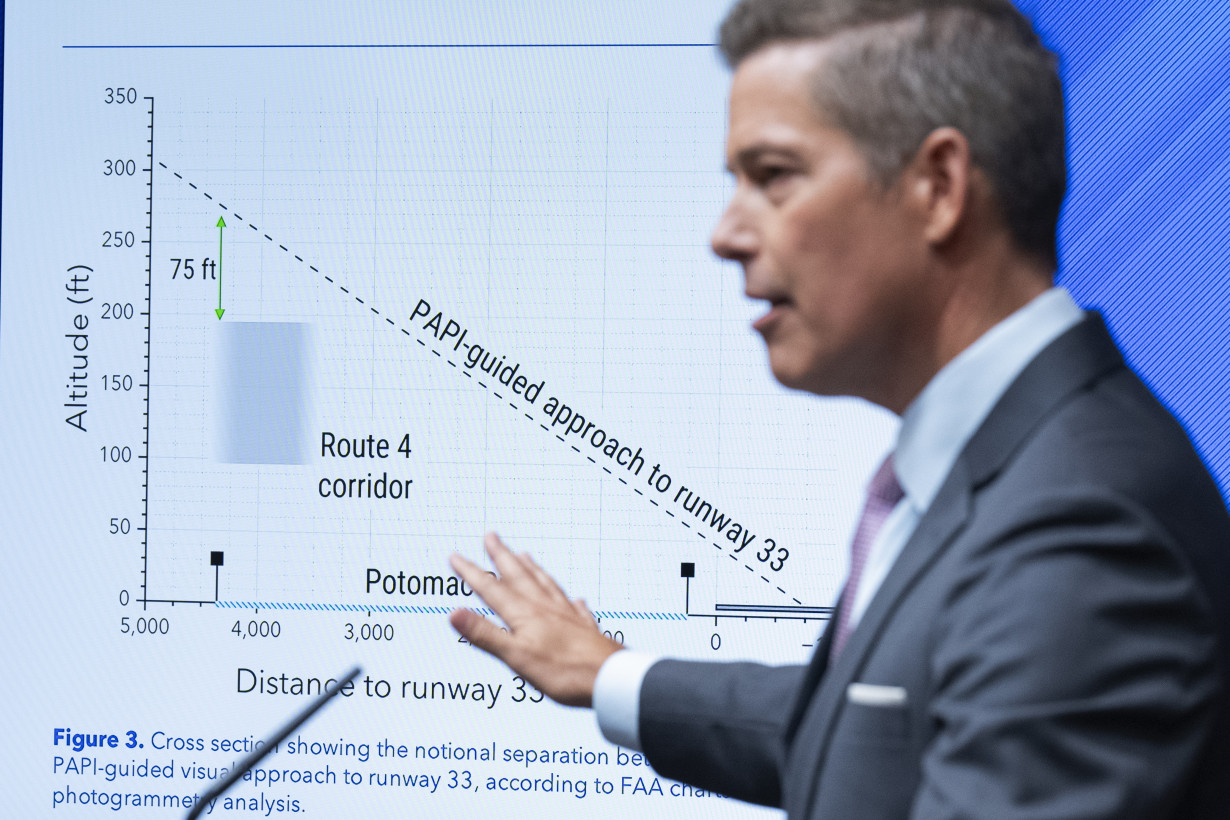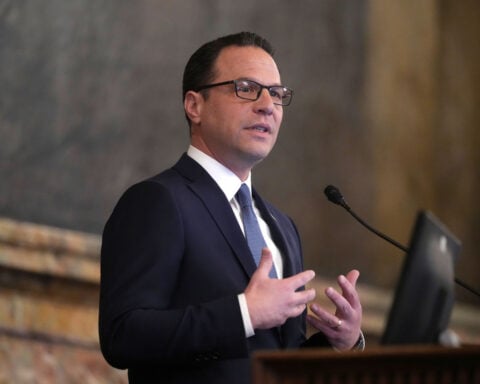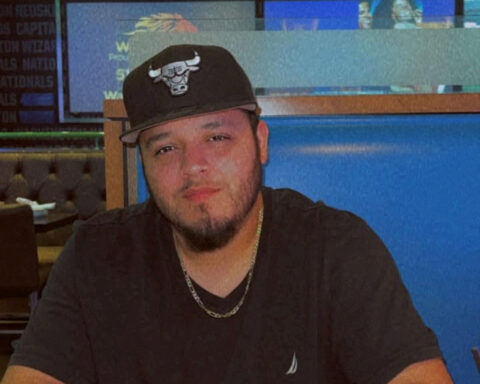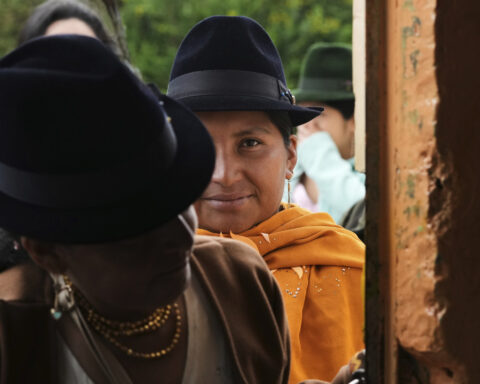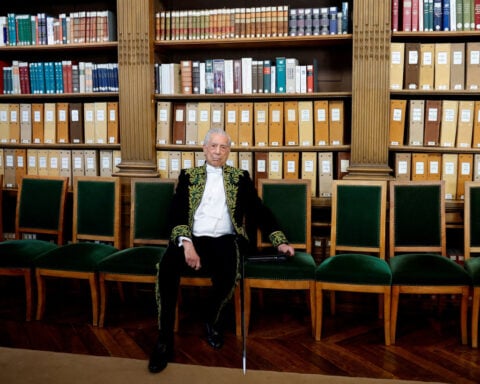Federal aviation officials will continue making sure that planes and helicopters no longer share the same airspace over the nation's capital in the wake of January's midair collision, which killed 67 people and was the deadliest U.S. plane crash in more than two decades.
The National Transportation Safety Board said Tuesday that a key helicopter route near Washington's Ronald Reagan National Airport needs to be shut down anytime two particular runways are in use. For years planes and helicopters could come within 75 feet (23 meters) of each other, and near-misses that triggered cockpit alarms were routine.
NTSB Chairwoman Jennifer Homendy called that an “intolerable risk to aviation safety” and said the FAA should have spotted the danger sooner because it had data on more than 15,000 close calls between 2021 and 2024.
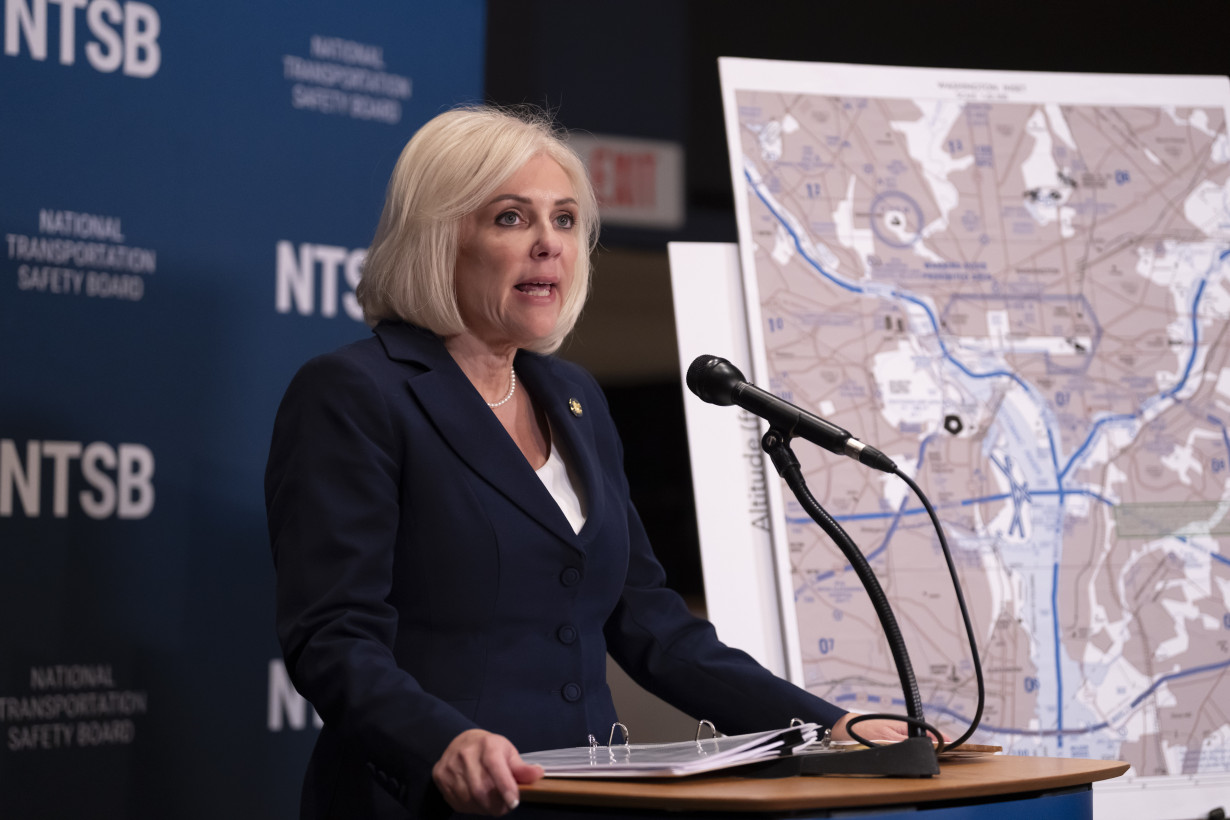
Transportation Secretary Sean Duffy said he will follow the NTSB recommendations and promised to use artificial intelligence to review all the data to make sure similar dangers don't exist at other airports.
Investigators are in the early stages of determining why the American Airlines passenger jet and Army helicopter collided as the plane prepared to land Jan. 29. Both plunged into the Potomac River, killing everyone aboard.
Investigators previously said the helicopter may have had inaccurate altitude readings in the moments before the crash, and the crew may not have heard key instructions from air traffic controllers.
The collision was the deadliest plane crash in the U.S. since 2001, when a jet slammed into a New York City neighborhood just after takeoff, killing all 260 people on board and five more on the ground.
A string of crashes this year along with a near miss have brought attention to air travel, which remains overwhelmingly safe. On Jan. 31 a medical transport jet crashed into a Philadelphia neighborhood, killing seven. On Feb. 6 a small commuter aircraft went down off western Alaska, killing 10. On Feb. 17, a Delta plane crashed and flipped over upon landing in Toronto. Two small planes collided in midair in Arizona on Feb. 19, killing two people. And there was a scary moment Feb. 25 in Chicago when a Southwest Airlines plane aborted its landing to avoid crashing into another plane crossing the runway.
Here's a look at the Jan. 29 crash:
What happened?
American Airlines Flight 5342 from Wichita, Kansas, was carrying 60 passengers and four crew members, as it approached to land on a clear night. Nearby the Army Black Hawk, with three soldiers on board, was practicing emergency evacuation routes that would be used to ferry out key government officials in an attack or catastrophe.
Investigators believe the helicopter crew was wearing night-vision goggles that would have limited their peripheral vision.
A few minutes before the twin-engine jet was to land, air traffic controllers asked if it could use a shorter runway. The pilots agreed, and flight-tracking sites show the plane turned to adjust its approach. The NTSB now says that anytime that runway is used — the one in question accounts for about 5% of the airport's flights — the helicopter route should be shut down.
Shortly before the collision, a controller got an alert saying the plane and Black Hawk were converging and asked the helicopter if it had the jet in sight. The military pilot said yes and asked for “visual separation” with the jet for a second time, allowing it to fly closer than if the pilots couldn't see the plane. Controllers approved the request.
Roughly 20 seconds later, the aircraft collided.
The investigation
The NTSB has recovered all flight data recorders and pulled the wreckage of both aircraft from the Potomac.
It will take more than a year to get the final NTSB report identifying the cause of the crash.
Homendy told reporters last month that the Black Hawk's cockpit recorder suggested an incomplete radio transmission may have left the crew unable to hear air traffic control tell them, just before the crash, to move behind the jet.
“That transmission was interrupted — it was stepped on,” she said at a Feb. 14 briefing, leaving the helicopter’s crew unable to hear the words “pass behind the” because their microphone key was pressed.
The radio altitude of the helicopter was 278 feet (85 meters) at the time, which would put it above its 200-foot (61-meter) limit for that location.
Cockpit conversations a few minutes before the crash indicate that the crew may not have had accurate altitude readings, with the helicopter’s pilot calling out that they were at 300 feet (91 meters) but the instructor pilot saying 400 feet (122 meters), Homendy said.
“We are looking at the possibility there may be bad data,” she said.
That generation of Black Hawks typically has two types of altimeters: one relying on barometric pressure and the other on radio frequency signals bounced off the ground. Helicopter pilots typically rely on barometric readings while flying, but the helicopter’s black box captures its radio altitude.
Almost immediately after the crash, President Donald Trump faulted the helicopter for flying too high. He also blamed federal diversity and inclusion efforts, particularly regarding air traffic controllers. When pressed by reporters, the president could not back up those claims. A few days later, he blamed an “obsolete” air traffic control system that he said should have been replaced years ago.
The Black Hawk crew was made up of an instructor pilot with 968 hours of flight experience, a pilot with about 450 hours and a crew chief with nearly 1,150 hours. Army officials have said the crew was familiar with the crowded skies around Washington.
The victims
The Army identified the Black Hawk crew as Capt. Rebecca M. Lobach, 28, of Durham, North Carolina; Staff Sgt. Ryan Austin O’Hara, 28, of Lilburn, Georgia; and Chief Warrant Officer 2 Andrew Loyd Eaves, 39, of Great Mills, Maryland. O’Hara was the crew chief, and Eaves and Lobach were pilots.
Among the jet’s passengers were several members of the Skating Club of Boston who were returning from a development camp for elite junior skaters that followed the 2025 U.S. Figure Skating Championships in Wichita. A figure skating tribute event in Washington raised $1.2 million for crash victims' families.
Others included a group of hunters returning from a guided trip in Kansas: four members of a steamfitters’ union in suburban Maryland: nine students and parents from schools in Fairfax County, Virginia: and two Chinese nationals.

 Trump has begun another trade war. Here's a timeline of how we got here
Trump has begun another trade war. Here's a timeline of how we got here
 Canada's leader laments lost friendship with US in town that sheltered stranded Americans after 9/11
Canada's leader laments lost friendship with US in town that sheltered stranded Americans after 9/11
 Chinese EV giant BYD's fourth-quarter profit leaps 73%
Chinese EV giant BYD's fourth-quarter profit leaps 73%
 You're an American in another land? Prepare to talk about the why and how of Trump 2.0
You're an American in another land? Prepare to talk about the why and how of Trump 2.0
 Chalk talk: Star power, top teams and No. 5 seeds headline the women's March Madness Sweet 16
Chalk talk: Star power, top teams and No. 5 seeds headline the women's March Madness Sweet 16
 Purdue returns to Sweet 16 with 76-62 win over McNeese in March Madness
Purdue returns to Sweet 16 with 76-62 win over McNeese in March Madness
